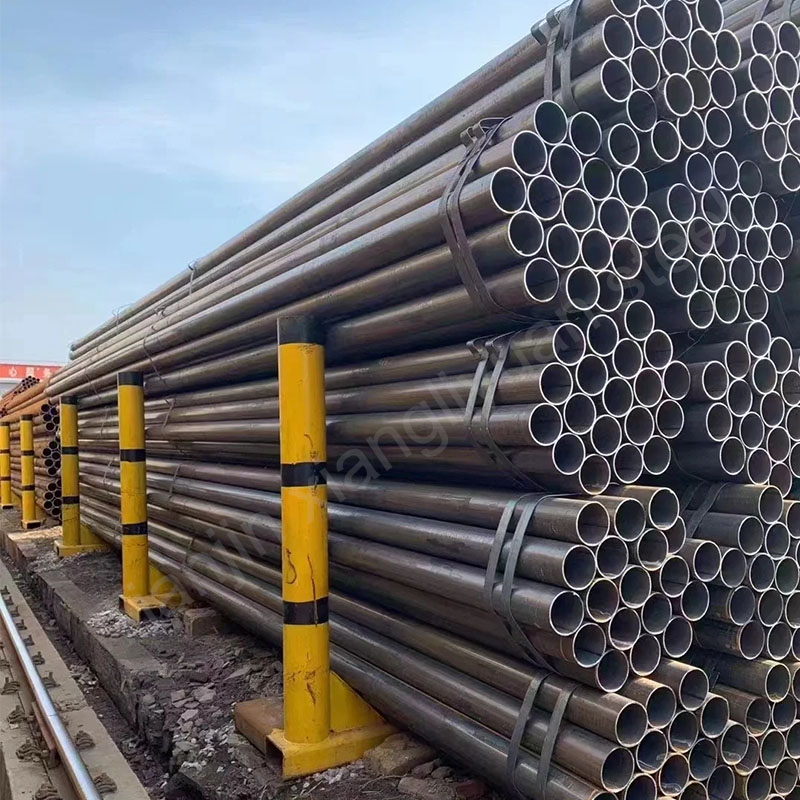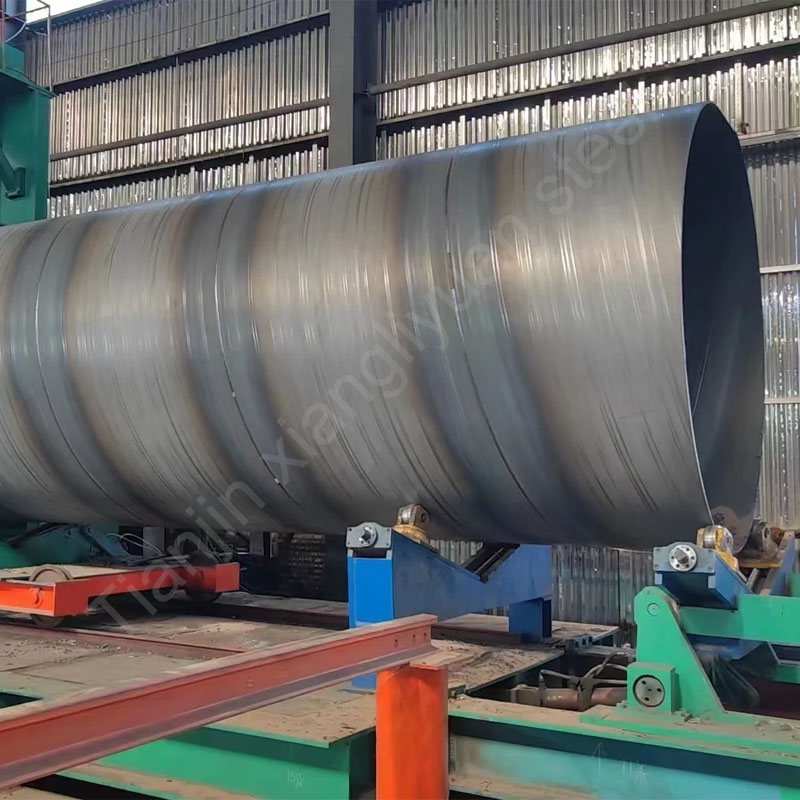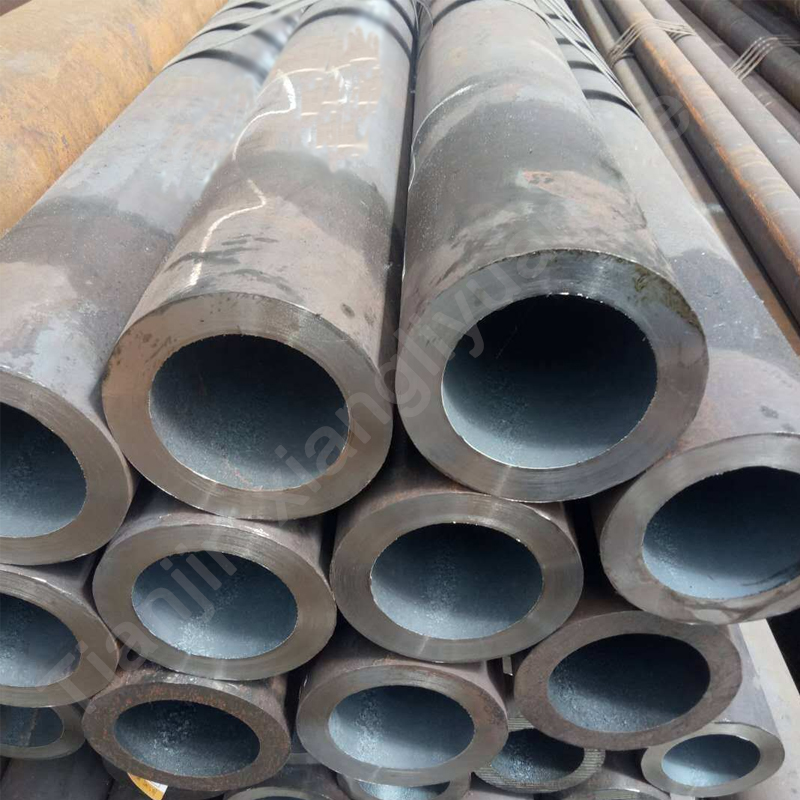In the world of industrial construction, infrastructure, and mechanical engineering, the choice of material is paramount. Among the various options available, Q355 steel pipe has emerged as a superior and highly versatile choice for a wide range of demanding applications. This comprehensive guide delves into everything you need to know about Q355 steel pipe, exploring its properties, benefits, manufacturing processes, and the key industries that rely on its strength and durability.
1. What is Q355 Steel Pipe?
Q355 steel pipe is a tubular product manufactured from Q355 structural steel, a Chinese standard (GB/T 1591) low-alloy, high-strength steel. The “Q” denotes the yield strength, and “355” indicates a minimum yield strength of 355 MPa (or N/mm²) for thicknesses ≤ 16mm.
This grade is often considered comparable to international standards such as S355 in European norms (EN 10025) and ASTM A572 Grade 50 in the United States. Its excellent combination of high strength, good toughness, weldability, and corrosion resistance makes it an ideal material for structural and mechanical components.
Q355 steel pipes are produced in various forms, including:
Seamless Steel Pipes (SMLS): Created by piercing a solid billet, resulting in a pipe with no welded seam. This offers superior strength and uniformity, ideal for high-pressure applications.
Welded Steel Pipes (ERW, SAW, LSAW): Formed by rolling steel plate or coil and welding the seam.
ERW (Electric Resistance Welded): Common for general structural purposes.
LSAW (Longitudinal Submerged Arc Welded): Used for larger diameter pipes, common in pipeline systems.
SAW (Submerged Arc Welded): Similar to LSAW, often for heavy-wall applications.
2. Key Properties and Advantages of Q355 Steel Pipe
The widespread adoption of Q355 steel pipe is driven by its exceptional mechanical and chemical properties.
A. Mechanical Properties
High Yield Strength (≥355 MPa): This is the primary advantage. It can withstand significant loads and stresses without permanent deformation, allowing for the design of lighter, more efficient structures compared to lower-grade steels like Q235.
Excellent Tensile Strength (470-630 MPa): This measures the pipe’s resistance to breaking under tension, ensuring integrity under extreme loads.
Good Toughness and Ductility: Q355 steel maintains good impact toughness, even at lower temperatures. This prevents brittle fracture, a critical factor in structures exposed to dynamic loads or cold climates.
Fatigue Resistance: It performs well under cyclic loading, making it suitable for applications like crane booms, vehicle frames, and offshore structures.
B. Chemical Composition
The enhanced properties of Q355 are achieved through a carefully balanced chemical composition, which typically includes Carbon (C), Manganese (Mn), Silicon (Si), and microalloying elements like Vanadium (V) and Niobium (Nb). This composition enhances strength through grain refinement and precipitation hardening without significantly compromising weldability.
C. Key Advantages Summary:
Cost-Effectiveness: Higher strength-to-weight ratio reduces the amount of steel required, lowering overall material and transportation costs.
Superior Weldability: Its chemical composition is optimized for easy and reliable welding, producing strong, durable joints without pre-heating in most thicknesses.
Durability and Long Service Life: Resistant to deformation, impact, and fatigue, ensuring long-term structural integrity.
Versatility: Available in various sizes, diameters, wall thicknesses, and manufacturing types (seamless or welded) to suit diverse project needs.
3. Common Applications of Q355 Steel Pipe
Q355 steel pipe is a workhorse material across numerous heavy-duty industries. Its robustness makes it indispensable for critical infrastructure and machinery.
Building and Structural Construction:
Structural Hollow Sections: Used as columns, beams, and trusses in commercial buildings, industrial plants, stadiums, and airports. Its high strength allows for longer spans and more open, architecturally striking designs.
Scaffolding and Support Systems: Provides a safe and robust framework for construction projects.
Oil and Gas Industry:
Onshore and Offshore Pipelines: LSAW Q355 pipes are extensively used for transporting oil and gas over long distances, capable of withstanding high internal pressure and external loads.
Drilling Rigs and Platform Structures: Used in the structural components of offshore platforms and land-based rigs due to its toughness and fatigue resistance.
Mechanical Engineering and Heavy Equipment:
Crane Booms and Arms: The high strength and stiffness are crucial for the long, unsupported sections of cranes, minimizing deflection under load.
Construction Machinery: Used in the frames and booms of excavators, bulldozers, and loaders.
Vehicle Chassis and Frames: For heavy-duty trucks, buses, and special-purpose vehicles requiring a strong yet lightweight frame.
Bridge Building:
Used in the construction of bridge arches, supports, and guardrail systems, where its ability to handle heavy traffic loads and resist environmental factors is essential.
Power Generation and Transmission:
Power Plant Structures: Structural supports within thermal, nuclear, and renewable energy plants.
Transmission Towers: Lattice structures for electrical transmission lines benefit from the strength and durability of Q355 steel pipe.
Other Applications: Agricultural machinery, mining support systems, shipbuilding, and wind turbine towers.
4. Q355 vs. Other Common Steel Grades
Understanding how Q355 compares to other grades helps in making an informed material selection.
Q355 vs. Q235: Q235 is a mild carbon steel with a lower yield strength (235 MPa). Q355 offers approximately 50% higher yield strength, allowing for significant weight reduction in structures. Q355 also has better low-temperature impact toughness.
Q355 vs. ASTM A36: A36 is a common carbon structural steel in the US with a yield strength of 250 MPa. Q355/A572 Grade 50 is a direct high-strength, low-alloy upgrade.
Q355 vs. ASTM A500 Grade B/C: A500 is a standard for cold-formed welded structural tubing. Q355 offers similar or superior mechanical properties and is available in both welded and seamless forms for a broader range of applications.
5. Manufacturing Processes: Seamless vs. Welded
The performance of a steel pipe is heavily influenced by its manufacturing process.
Process: A solid billet is heated and pierced to form a hollow shell, which is then elongated and rolled to the final size.
Advantages: No seam, making it stronger and more reliable under high pressure. Uniform grain structure and better concentricity.
Typical Uses: High-pressure hydraulic systems, oil and gas well casings, bearing sleeves, and critical mechanical components.
Welded Steel Pipe (ERW, LSAW):
Process: A steel strip or plate is cold-formed into a cylindrical shape and the edges are welded together. ERW uses electric current, while LSAW uses submerged arc welding.
Advantages: More cost-effective, available in larger diameters, and produced with tighter dimensional tolerances.
Typical Uses: Structural applications, water pipelines, low to medium-pressure fluid transmission, and construction pillars.
The choice between seamless and welded Q355 pipe depends on the application’s pressure requirements, budget, and dimensional needs.
6. Key Considerations When Sourcing Q355 Steel Pipes
To ensure you get the right product for your project, pay attention to the following:
Specifications and Standards: Confirm the exact standard (GB/T 1591, GB/T 8162, GB/T 8163, API 5L, etc.), grade, and required supplementary requirements (e.g., impact testing at -20°C).
Dimensions and Tolerances: Precisely define the Outer Diameter (OD), Wall Thickness (WT), and length. Specify acceptable tolerances for straightness, ovality, and wall thickness variation.
Surface Treatment: Consider if the pipe requires protective coatings like black paint, galvanization (zinc coating), or primer to enhance corrosion resistance for specific environments.
Supplier Certification and Quality Control: Source from reputable manufacturers and suppliers who can provide Mill Test Certificates (MTC) that verify the chemical and mechanical properties of the batch. Look for certifications like ISO 9001.
Why Choose Q355 Steel Pipe?
Q355 steel pipe represents the ideal synergy of performance, economy, and versatility. Its high strength allows for lighter and more innovative designs, its excellent weldability simplifies fabrication, and its proven durability ensures a long and reliable service life in even the most challenging conditions. Whether you are building skyscrapers, laying pipelines across continents, or manufacturing heavy machinery, Q355 steel pipe provides the robust foundation your project needs to succeed.
For your next project that demands reliability and strength, specifying Q355 steel pipe is a decision that guarantees performance, safety, and value.If you need to purchase Q355 steel pipes, please feel free to contact us – Tianjin Xiangliyuan Steel. We will be happy to serve you.






